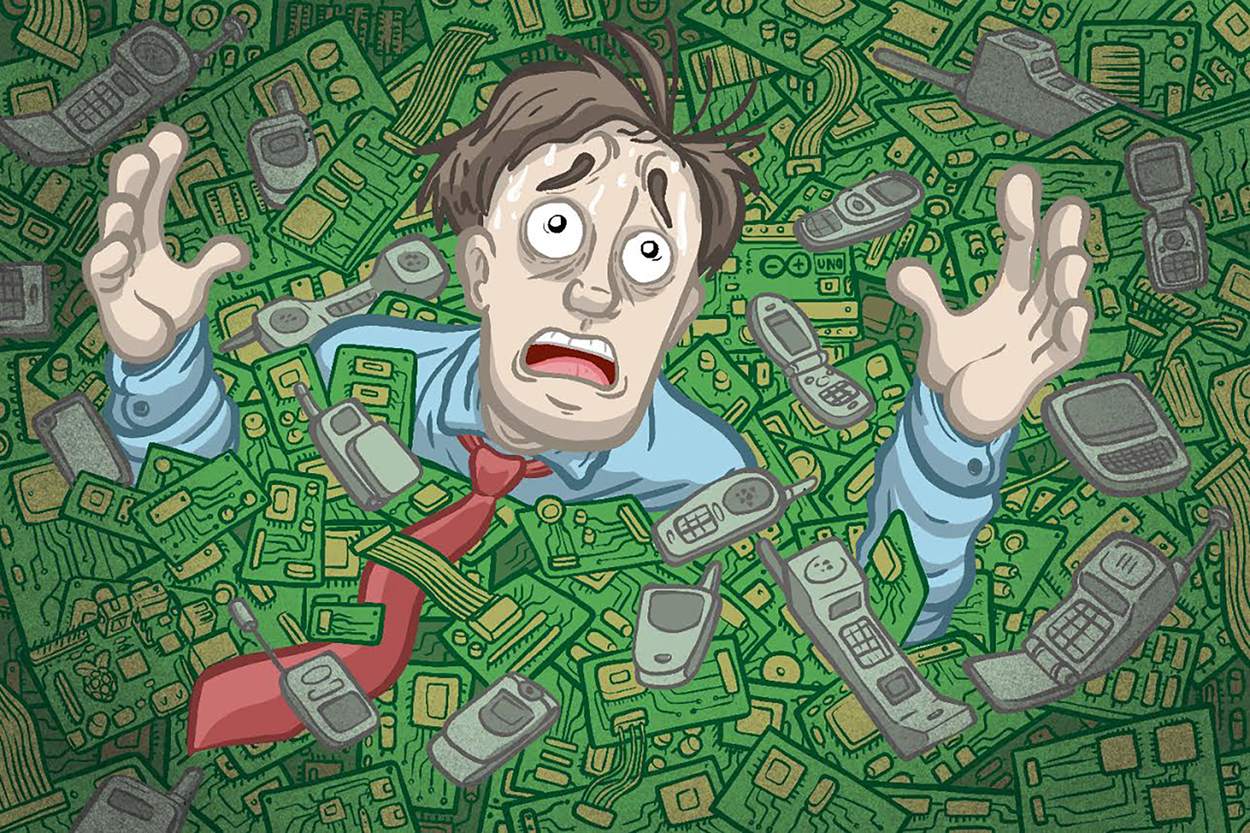
We use literally tons of electronics in the United States. Computers, televisions, and mobile devices are just some of our electronic gadgets. When a new version comes out, or an old one gives up the ghost, we want the newest update. But what happens to our old junk?
According to the Environmental Protection Agency, in 2009, the U. S. disposed of 2,440,000 tons of electronics. Of that total, even more was trashed – mostly in landfills – compared to recycling. 1,790,000 tons were tossed, compared to 649,000 tons recycled. That’s only a 27% recycling rate.
The problem with trashing old gadgets is that they contain chemicals and elements extremely toxic to us and to the environment. Lead, mercury, arsenic, beryllium, cadmium and polyvinyl chloride are just some of the toxins released in landfills from electronic waste. These toxins are connected to cancer, reproductive disorders and endocrine disruption. The heavy metals, when released by incineration, accumulate in the food chain.
So, as responsible person, you decide you are not going to contribute to that problem. You decide to recycle when you replace your laptop. Good for you! One problem – did you pick a reputable recycler?
It’s estimated that as little as 20 percent of e-waste domestically collected each year is processed by reputable firms in controlled conditions or by prison inmates with few handling requirements. The remaining 80 percent is exported to Asia and Africa where health and safety regulations are almost nonexistent.
Not only does the e-waste endanger those who handle products for recycling, but the chemicals and toxins released into the environment have global consequences. In 1989, the Basel Convention drafted an international treaty to control export of hazardous waste from wealthy to poor countries. But America has yet to ratify that treaty.
According to a 2013 report from United Nations University Institute for Sustainability and Peace, China is the largest e-waste dumping site in the world. According to a September, 2014 article in The Economist, Guiyu Guangdong Provinces is the e-waste capital of the world. The bulk of what they process is domestically produced, but they receive waste from the U.S., Europe and Japan. The plants there employ 150,000 people, including large numbers of children who disassemble old computers, phones and electronics by hand. The levels of lead in the children bodies is 49% over the maximum safety level.
Making your personal recycling count requires a bit of research. There are recyclers who are accredited members of one of two voluntary certificates – e-Stewards or Responsible Recycling Practices. Both organizations strive to ensure responsible and safe recycling. According to the EPA, “These certification programs are based on strong environmental standards which maximize reuse and recycling, minimize exposure to human health or the environment, ensure safe management of materials by downstream handlers, and require destruction of all data on used electronics.”
The SLCGreen website, www.slcgov.com/slcgreen/electronics, offers tips on recycling electronic equipment and lists places which are equipped to deal with the hazards of electronic waste recycling. They offer the following advice for when you want to get rid of that old computer or cell phone.
- How do they dispose of material that can’t be reused? (Is it landfilled? Who is the recycler?)
- If recycled, is the hard drive physically destroyed? How do they ensure my information is non-retrievable?
- Are any components exported? Where?
- Where is the hazardous material, such as lead, mercury, cadmium, chromium and other chemicals disposed of?
If you bring your equipment to the Salt Lake County Household Hazardous Waste Facility or any Salt Lake City-sponsored collection event, they’ve already asked these questions for you!






